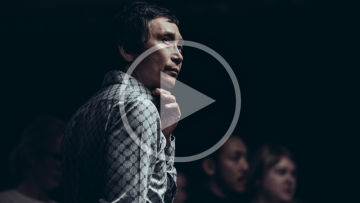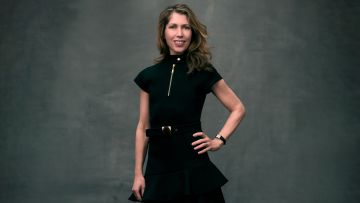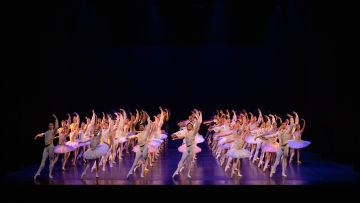Meet Taron Geyl

#The dancer and martial artist taking TikTok by storm
It began as the art of men and kings, once performed in royal courts for the elite, but for Taron Geyl’s 240,000+ TikTok followers, ballet is accessible to the masses - and smashing stereotypes too.
The 19-year-old Queensland Ballet Academy dancer and black belt martial artist, currently in his final full-time ballet training year (Pre-Professional Program) has amassed a huge social media following by offering a unique take on ballet with his series of dance and martial arts videos that have been liked by millions.
Taron grew up learning both, with a ballet school run by his mother (a former Australian Ballet Company Artist) and a martial arts school run by his father (a 5th Dan Black Belt WTF Taekwondo) on his home property. Often wearing a fluoro yellow trades shirt, his TikTok videos alternate between him showcasing his taekwondo and dance skills. It’s a side of ballet that is surprising to many who may have considered the latter artform unmasculine.
“I think social media is quite effective in breaking the stereotype, because it gives us exposure and we can show the world what we’re actually doing,” Taron says.
“I understand the stereotype because a lot of people are taught that ballet is for women and is effeminate. So, when someone has that perspective, I don’t blame them. They haven’t experienced what ballet is like, so they aren’t aware of the masculinity within it. It requires a massive amount of strength and power, especially when performing difficult lifts with other dancers.”
One of his videos, filmed at QB, blew up to 13 million likes. Followers amassed from there. He says there’s a big range of comments that come with that.
“People can tease you for sure, but a lot of people are really supportive and say they love watching the videos, it makes them happy, and that’s why I do it – to make people happy. It’s a bit of fun, it puts people in a good mood,” he says.
“I’ve definitely been teased a bit in my life. Not so much anymore, but growing up I’d be called names and whatnot, which did have an impact. I actually had a friend who stopped dancing because of it, and I’ve experienced that feeling. But for me, all the positive comments from my dance peers, martial arts colleagues, and TikTok followers have outweighed any negativity. The taekwondo school has been a massive support, and continues to follow my journey in dance.”
Taron trains six days a week at Queensland Ballet, fitting in taekwondo/tricking sessions wherever he can. His dad insisted he keep up the martial arts because it helps with his dance training. He uses the gym to get stronger and for bulking, so he can lift the dancers easier. Ballet provides the cardio.
Ultimately though, it’s his love of movement that inspires his passion for both.
“There are definitely similarities between the two arts,” he says.
“The strength, the discipline, the mental willpower required.
“I’d say what I love most about ballet, and why I love contemporary so much too, is just the feeling of moving. The ability to move in such different ways, and also the power and strength needed. It requires a lot of work and I love a good challenge.”
“Martial arts helps with my jumps, and the power in my legs, too.”
Real life offers something bigger than TikTok ever could though.
“I performed in a piece in last year’s Summer Soirée called Echo of Reflection, choreographed by Paul Boyd (featuring art by Michael Zavros), and the feeling I got from the applause was unmatched to anything I’ve ever felt before,” he recalls, after thinking for a moment.
“It was quite amazing, that performance. It felt incredibly real, dancing on the Lyric Theatre stage, surrounded by all my peers.
“That was a highlight.”
By Cassandra Houghton
Photo: Taron Geyl by David Kelly



